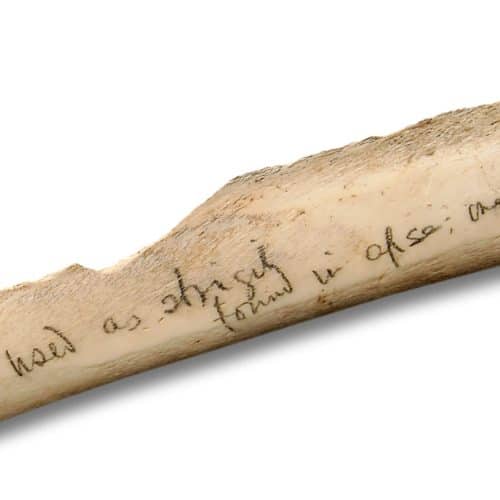Romans activity 6: taking the plunge
Discuss the images in Learn with Objects Romans 7: bath time with the children.
What do they think the different objects are?
Use this as a starting point to investigate Roman baths - including private ones in the homes of the rich and public ones in Roman towns and cities.
Pupils then investigate the remains of the bath house at Folkestone Roman Villa, imagine what it was like in its heyday, and create a short piece of drama based around a Roman bathing experience.
Learning objectives
Increased knowledge and understanding of archaeology and Folkestone Roman Villa.
Research skills.
Script writing skills.
Skills and confidence in performing in role play, drama.
Curriculum links
KS1-2 History (Romans, Local History Study).
KS1-2 English (speaking and listening, script writing, role play, drama)
Discuss the images in Learn with Objects Romans 7: bath time with the children.
- What are the different objects?
- What is the strange bone object?
- Can anyone read what archaeologist Samuel Winbolt has written on it?
- What’s a strigil?
- Where’s the Apse?
- What’s the significance of the line ‘one also found in bath house’
Were strigils used at the baths? If so, what for?
Use this as a starting point for children to research the subject of Roman baths (both private baths in the homes of the rich) and public baths in Roman towns and cities. Perhaps they could find out answers to some of the questions below:
- Who went to the baths?
- Did they go often?
- Did men, women and children go?
- What was the experience like?
- What did they do at the baths apart from bathing?
- What happened in the different rooms and what were they called?
- What was a strigil used for?
- Were they all made out of bone?
- How were the baths heated?
- What’s your favourite fact about Roman baths?
These BBC Bitesize videos about Roman baths are worth watching with your class.
https://www.bbc.co.uk/programmes/p0114xtx
https://www.bbc.co.uk/programmes/p01151qk
Pupils then investigate the remains of the bath house complex at Folkestone Roman Villa in more detail by looking at Rooms 1-10 on the Plan of Folkestone Roman Villa and the Key to the Plan of Folkestone Roman Villa via the links below.
http://www.canterburytrust.co.uk/folkestone/gallery0114.htm
http://www.canterburytrust.co.uk/folkestone/gallery0115.htm
What order do they think bathers you went through the rooms and what happened in each?
Drama
Ask the children to imagine what the bath house at Folkestone Roman Villa was like in its heyday, and to work in teams to create a short piece of drama based around a Roman bathing experience called Taking the Plunge.
Children dress in character as members of the family, their guests or slaves, giving each other Roman names and backstories. Make props and costumes to use in the performance.
Here are a few ideas for possible content…
- It’s the first time the family have used the new bath house and they have a grand opening bath party to celebrate… including an offering to Sulis Minerva. She is the goddess of the thermal springs at Aquae Sulis... and now also the protector of the bath house at Folkestone.
- Dad might be giving a ‘boring and embarrassing’ behind the scenes tour to some family friends including to the stoke hole, to describe the hypocaust that heats it up, and even to see the room where the bath slave lives.
- Guests might compare the baths to others they’ve visited (good and bad) including the Great Bath at Aquae Sulis or the Baths of Diocletian in Rome.
- They might discuss business (the next shipment of quern stones) or the redecoration of the dining room.
- The children could splash each other and get told off, or chaos might ensue when the family dog jumps in to join them!
- Bathers might play dice, or board games. The water might be too hot or cold (and the slaves blamed). Guests might have a luxurious massage with scented oils and a vigorous scrape with the bone strigil, which then gets sucked into the water pipe!
- Or something even more dramatic might happen… it's over to you!
Taking the Plunge role plays can be performed in front of the class or to parents as part of a Romans project celebration event..

